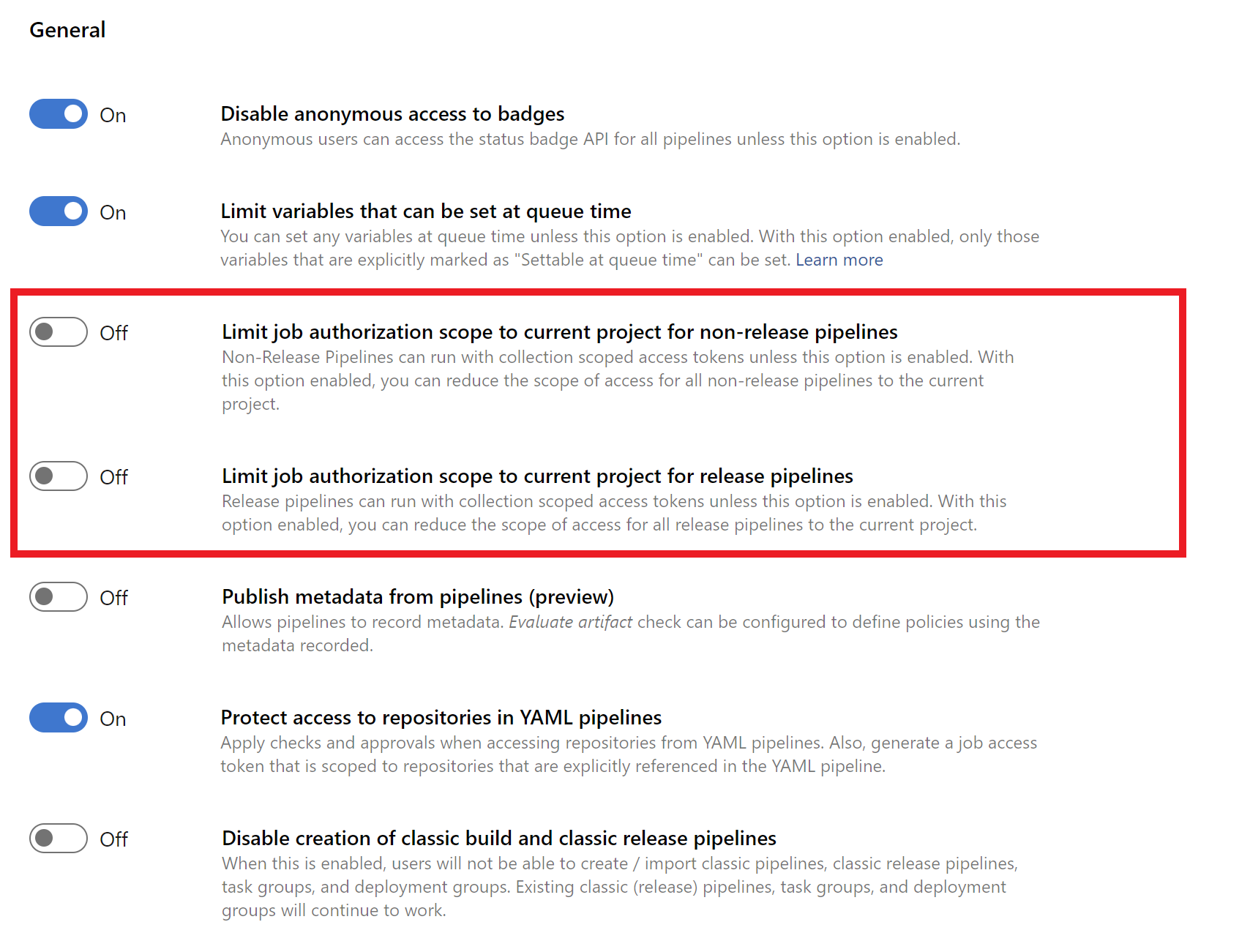I got contacted by a colleague who asked my help to fix the following error message he gots when executing his build pipeline using Azure Pipelines:
error NU1301: Unable to load the service index for source https://tfs.server.com/tfs/DefaultCollection/_packaging/797f899f-9ad1-4158-93bc-8f3293cf4a59/nuget/v3/index.json.
This problem turned out to be similar to a problem I had before. Although the error message was not the same and we got less details about the root cause, I could apply the same solution.
I had to uncheck the "Limit job authorization scope to current project" toggles in the Project Settings:
To get all the details, check out the original post: Azure Pipelines error - User lacks permission to complete this action.
